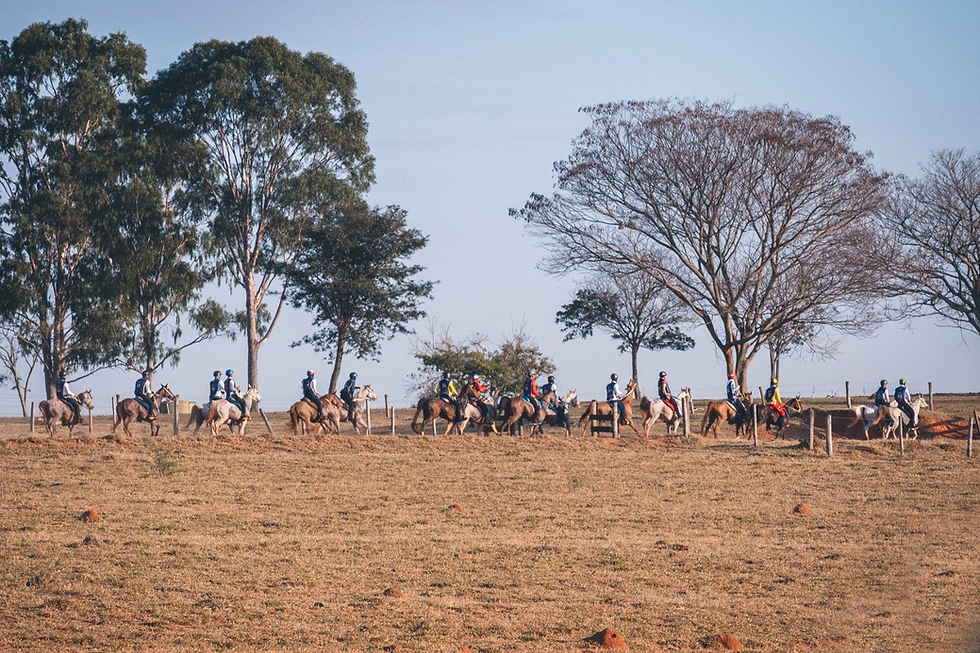Why Doesn’t Endurance Get the Coverage It Deserves?
- Bella Fricker

- Jul 22
- 3 min read
Every now and again a stat pops up that stops you in your tracks. The most recent one? FEI endurance has more riders, more horses and nearly as many events as eventing and dressage. Yet it’s still the discipline that gets the least media coverage.
I’ll admit I’m biased—endurance is my life. But when I saw the numbers laid out in black and white, even I raised my eyebrows:
Endurance: 793 events | 5,960 athletes | 8,611 horses
Eventing: 750 events | 5,803 athletes | 9,343 horses
Dressage & Para Dressage: 935 events | 4,423 athletes | 5,786 horses
So why, despite these impressive numbers, are we still the underdogs when it comes to mainstream recognition?
Let’s unpack it.

Spectator & Broadcast Challenges
Endurance is hard to film and follow: The sport takes place over vast distances (often 100km+) in remote terrain. Unlike jumping or dressage, there’s no arena or fixed location, making it expensive and logistically difficult to cover live.
Lack of visual drama: Unlike a stadium jump-off or freestyle routine, the action in endurance is subtle, slow-paced, and can appear uneventful unless you deeply understand the sport.
Sponsorship & Commercial Appeal
Jumping and dressage have wealthier patronage and sponsorship: They attract luxury brands (e.g., Longines, Rolex) thanks to their elite, glamorous reputation.
Endurance has historically struggled with image: Particularly during controversies around horse welfare and rule enforcement (notably in parts of the Middle East), which have hurt commercial confidence in backing the sport.
Audience Engagement
Dressage and jumping have clearer “moments”: Jumping has knockdowns and time faults, dressage has high scores and crowd-pleasing movements. Eventing combines drama with risk.
Endurance lacks clear highlights: Unless it’s a sprint finish or dramatic vet gate moment, it’s hard for casual viewers to emotionally engage without deep understanding.

Media Traditions & Priorities
Media outlets have long-established teams covering jumping, dressage, and eventing – especially with Olympic exposure. Endurance is still fighting for recognition in these circles.
Eventing and dressage also benefit from higher levels of national federation support in traditional horse sport countries (e.g., UK, Germany), influencing coverage decisions.
What Are We Missing?
Endurance is misunderstood. People see 100km and assume it’s just “riding long distances.” What they don’t see is the strategy, the horsemanship, the management, the conditioning. The decisions made in a heartbeat. The heartbreak when your horse doesn't pulse. The elation when everything comes together after months—years—of training.
We have the same emotional highs and lows, the same dedication, the same skill. We just need to be better at telling our stories.

But there are positives:
FEI has started investing more in social media coverage, race reporting, and highlight reels for major endurance championships.
There’s growing interest in grassroots and amateur endurance, especially as the sport aligns well with welfare-focused, outdoor, and inclusive equestrianism.
Endurance athletes are now better storytellers and content creators—an opportunity for the sport to grow organically through digital platforms.
So What Can We Do?
We keep showing up. We keep sharing the behind-the-scenes. The vet checks. The maps. The trot-ups. The lows and the wins. We turn our footage into reels. We talk about our tack, our crew, our training. We get our sport out there—one post, one blog, one story at a time.
And if you're reading this and you're part of the media, or a brand, or a national federation—we're here. We’re passionate, professional and growing. The numbers are rising. The interest is there. It’s time we brought endurance out of the shadows.
☕️ Enjoyed this blog? You can Buy Me a Coffee to support my writing and post-ride biscuit fund. It means the world.





Comments